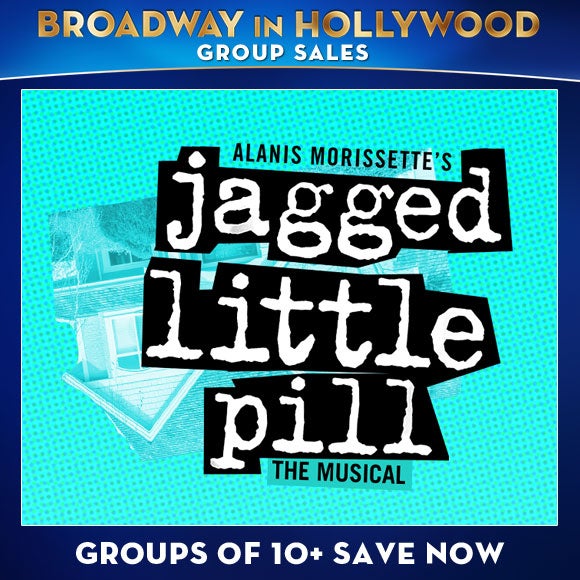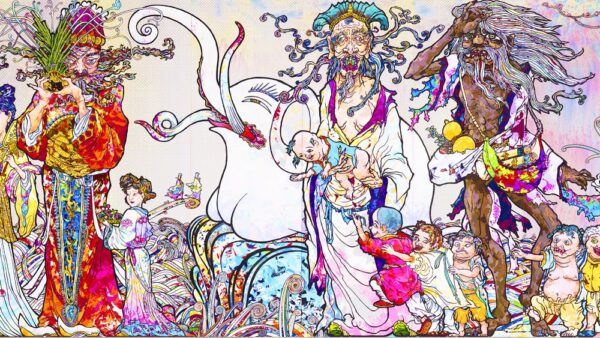
14 Sep TIO LaLa Land: Murakami & Morissette Go BIG!
“Saturn Devouring His Son” depicts the Roman god, also Titan Kronos in Greek mythology, savagely eating one of his children. It is one of Francisco de Goya’s most brilliant – and most disturbing – paintings. And a major influence on the Japanese artist (and industry) known as Takashi Murakami. As his career evolved and triumphed, that image became the artist’s underlying metaphor for West meets East.

Murakami once explained to CNN:
“As a child, looking at paintings was absolutely boring. One standout memory was when, around the age of 8, I had to wait in line for three hours with my family, just to see the Spanish artist Francisco Goya’s painting at a museum in Tokyo. The work depicted Titan Cronus (or Saturn) eating his own children. The image was haunting and kept me up for many nights after. I think this profound experience, or trauma, formed the basis for my act of painting to this day. It taught me that if my work doesn’t move people and induce a ‘wow!”‘ then it’s all for nothing.”
Murakami need not worry. His “all” is now on display at The Broad, (through September 25 only), in a mesmerizing, mind-bending show titled “Takashi Murakami: Stepping on the Tail of a Rainbow.” And it is a WOW!
The sweeping, exhibition serves up the usual, always cynical, eye candy: the world according to Murakami was not and is not always a happy place. In the aggregate this medley of some of his greatest (and some of his newest) hits underlines the artist’s overriding impulse to critique Japanese culture and the West’s invasive, all-pervasive influence. Featured are 18 works created throughout his career, plus new immersive environments developed in tandem with the artist and his studio, Kaikai Kiki Co., Ltd.
Specifically sculptures, paintings, wallpaper, and immersive installations showcase Murakami’s fixation with subject matter such as globalization, postwar Japan, pop culture, religious iconography and, lately, Covid. Included are two of the artist’s monumental paintings, the 32-foot-wide “100 Arhats” (2013) and the 82-foot-wide “In the Land of the Dead, Stepping on the Tail of a Rainbow” (2014), plus the 1999 sculpture “DOB in the Strange Forest (Blue DOB)’ that features Murakami’s iconic, anime-inspired character Mr. DOB. Also featured is one of his many hypertrophic Barbie figures.
For his art-as-business approach, and for his large factories of workers who produce, market, and sell his prodigious output, Murakami is often compare to Andy Warhol, the Pop icon who tanked the notion of elitism and the superiority of the art world – while simultaneously benefitting hugely from that illusion.
According to one online source:
“Murakami’s work must be understood as deeply critical to Western intervention. He was raised by parents who experienced the devastating nuclear bombings in a Japan that then faced heavy sanctions and a permanent U.S. military presence. His Japanese writings differ wildly from his essays written in English, and in them, he betrays a deep cynicism towards the West, and towards the global art market. Murakami considers Japan’s contemporary obsession with cuteness, youthful innocence, fetish, and violence to be the product of U.S. intervention that began with the bomb. Many believe that Murakami considers his thrusting of this culture onto the U.S. through his elevation of it as high art as a form of revenge.”
A story in The Hollywood Reporter features an illuminating interview.
The Murakami show also serves to underline the ethos of The Broad, an ethos that plays out time and again in the permanent collection in the works of Kara Walker, Cecily Brown, Roy Lichtenstein, Jasper Johns, El Anatsui, Mark Bradford and many other very fine, fine artists. Clearly The Broad is not about art for art’s sake. This very fine collection (read lovingly, knowledgeably curated) is all about art as social commentary and, as such, holds up a mirror to our world to reveal warts and all.
Which is also what the play based on Alanis Morissette’s “Jagged Little Pill” also endeavors to do.

In 1995, alt-rock icon Alanis Morissette released “Jagged Little Pill,” which sold 16 million copies in the U.S. and 33 million worldwide, making it one of the best-selling albums of all time domestically and globally. (Still true.) Songs in the album roll up into an anthem for anyone in conflict with conventional (read patriarchal, cis) society.
Which is who the show of the same name, penned by none other than Diabolo Cody of “Juno” fame, attempts to address – but shudders under the weight of its ambition – despite an excellent cast, great choreography and an infectious and affecting score.
Falls short at least for this writer, who grew up in the world of the 1997 gut-wrenching film “ice Storm” and Eric Fischl’s groundbreaking paintings, a voyeur’s-eye-view that trashed suburban life.
The overly ambitious menu on “Jagged Little Pill’s” table includes cultural transgressions such as rape and misogyny in general, racism, transracial adoption, transphobia, disability rights, helicopter parenting and more. Yes more. In other words, the calamity that is global culture. Simply put the parts are good, but the whole is way too much to digest at one sitting. That said, all is forgiven when Morissette’s “You Oughta Know,” kicks in – and when the supporting cast kicks out to underline as it repeatedly does, the emotions of the moment.
Likely our age is showing – the aforementioned been there, done that thing – because the mostly millennial audience at the Pantages Theatre in Hollywood rose to its feet more than once. Roared its support constantly.
“Jagged Little Pill” is up through October 2. If 1990s nostalgia and Morissette’s powerful songs and sentiments are your thing, go and prove me wrong.


Sorry, the comment form is closed at this time.